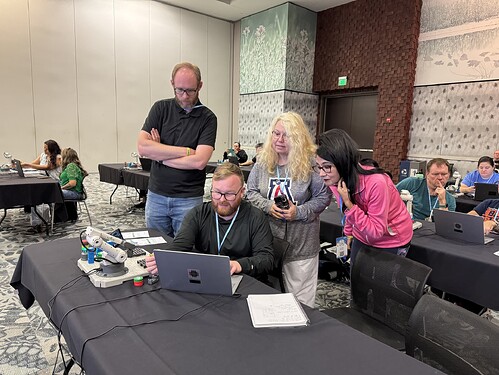At this year’s conference, one of my favorite CTE workshops revolved around an open ended challenge. In the Building a Future-Ready Workforce workshop, we talked about how the 6-Axis Robotic Arm and VEX CTE foster the development of 21st Century skills alongside coding and technical knowledge related to industrial robotics, and how this was especially visible in the open-ended challenges throughout the curriculum.
Participants then had an opportunity to apply what they learned about moving and coding the 6-Axis Arm, to work with their partner to first plan, then pseudocode, then build and test a project to fulfill an invoice. Educators in the workshop followed the same process that students would - checking in between each phase of the challenge with a facilitator, asking and answering questions, and working iteratively to build and test their projects.
Many participants were struck by just how important the planning an pseudocoding phases of the process were to their success. One educator even announced excitedly, “Wow, this really forces you to plan well!” Others tried to jump ahead, and then quickly realized why slowing down and talking through a strategy was important. The pseudocoding step led educators to talk with other groups to help them figure out how to code their ideas in different ways, and promoted great collaboration.
Having this opportunity to be learners in this context really encouraged educators to see just how challenging these tasks are, and to think about things like the order in which they were moving objects, or the coding concepts they needed to learn about in order to do what they intended. And when a pallet was packed correctly - everyone had a moment of celebration at their accomplishment!
In this photo: The educator seated at the table explained his project and how he used numerous variables to the surrounding educators from different groups around the room, who were trying to figure out to use a variable in their project.
One thing that struck me was how focused and engaged in all facets of the process everyone was throughout the challenge. When we came back together at the end of the workshop, it was clear not only how the 6-Axis Arm fostered meaningful, tangible skills, but also how much collaboration, communication, planning, and documentation factored into each group’s success. Not every group completed the challenge, but everyone learned so much from their progress, and had fun at the same time!
What have you learned about open-ended challenges this year (either at the conference or in your classroom)? How do you use open-ended challenges with your students?

